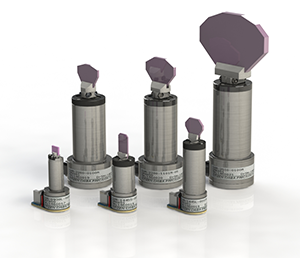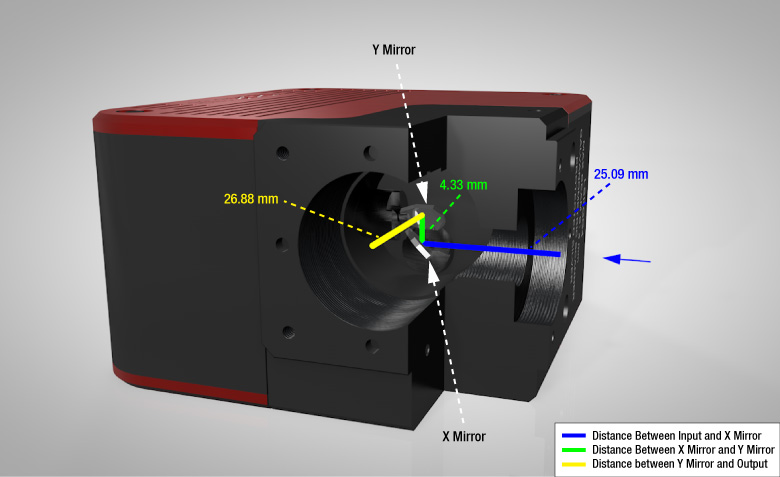Discovering the Advanced Functions of Modern Galvanometer Scanners in Research
Discovering the Advanced Functions of Modern Galvanometer Scanners in Research
Blog Article
Key Applications of a Galvanometer Scanner in Different Scientific Research Fields
Galvanometer scanners have ended up being essential to various clinical research areas, supplying improved accuracy in applications varying from biomedical imaging to environmental surveillance. As we discover the diverse applications of galvanometer scanners, it comes to be apparent that their influence expands much beyond mere technical capabilities, raising concerns concerning their future capacity in arising study locations.
Biomedical Imaging

In confocal microscopy, galvanometer scanners help with the procurement of images with improved resolution and comparison, permitting researchers to visualize mobile parts in vivo. The capacity to swiftly record multiple focal aircrafts improves the three-dimensional reconstruction of cells, offering essential understandings into their architecture and function.

Moreover, the fast scanning capabilities of galvanometer systems add to innovations in vibrant imaging applications, such as checking cellular actions to stimuli. For this reason, galvanometer scanners are crucial devices in the field of biomedical imaging, progressing research study and professional diagnostics with their precision and effectiveness.
Material Processing
Precision in product processing is critical for attaining top notch outcomes in various commercial applications (galvanometer scanner). Galvanometer scanners play a vital function in enhancing this accuracy by enabling rapid and accurate activity control during the handling of products such as steels, porcelains, and polymers. These devices facilitate strategies like laser cutting, welding, and engraving, which need finely-tuned changes to make sure optimal results
In laser cutting, for example, galvanometer scanners enable elaborate designs to be executed with high integrity, decreasing waste and boosting production effectiveness. The quick motion capacities make it possible for quick changes in the laser light beam course, which is vital for preserving consistent cutting quality across differing product thicknesses. In laser welding applications, the precision supplied by galvanometer scanners guarantees solid joints with minimal thermal distortion, therefore improving structural integrity.
Furthermore, the versatility of galvanometer scanners to different laser kinds and wavelengths further broadens their utility in material processing. Their capacity to function in tandem with sophisticated software application for real-time tracking and control adds an additional layer of sophistication, making it possible for manufacturers to attain specific specifications tailored to certain applications. Therefore, galvanometer scanners are essential in progressing the abilities of material handling innovations.
Optical Characterization
In the world of optical characterization, the role of galvanometer scanners comes to be significantly substantial as they help with the analysis of various optical buildings with high accuracy. These tools enable exact control of laser light beams, permitting scientists to systematically penetrate materials at multiple angles and regularities. This capability is vital for defining the refractive index, absorption coefficient, and spreading properties of varied materials.
Galvanometer scanners are especially efficient in techniques such as optical comprehensibility tomography (OCT) and laser-induced fluorescence (LIF), where quick scanning is crucial. By achieving high-speed modulation of the laser placement, galvanometer scanners boost the temporal resolution of these methods, leading to improved imaging and analysis. Additionally, they allow the expedition of complex interactions in between light and matter, which is important for recognizing product behaviors under different problems.
Furthermore, the combination of galvanometer scanners with spectroscopic methods expands their utility, enabling for thorough spectral analysis throughout a vast array of wavelengths. This flexibility makes them essential devices in fields such as materials science, biomedical study, and nanotechnology, where in-depth optical characterization more is extremely important for advancing expertise and innovation.

Laser Micromachining
The advent of laser micromachining has changed making processes, making it possible for the production of intricate structures with unparalleled precision. This method utilizes high-intensity laser light beams to specifically remove product from a substrate, making it possible to fabricate micro-scale components that are critical in different industries. The application of galvanometer scanners in laser micromachining boosts the effectiveness and precision of this procedure by enabling quick and exact light beam positioning.
Galvanometer scanners assist in the dynamic control of laser light beams, making it possible for intricate patterns to be engraved or reduced with high fidelity. Their rapid reaction times and high-resolution capabilities enable the adjustment of laser pulses, which is vital for attaining the desired material homes and surface area finishes. This innovation is specifically useful in markets such as electronics, where the miniaturization of elements is essential for performance improvement.
Moreover, laser Click This Link micromachining is progressively being utilized in the medical area for producing precision instruments and implants. The combination of laser innovation and galvanometer scanning not just improves manufacturing workflows however likewise reduces waste and enhances overall material utilization, making it a sustainable choice for modern-day production difficulties.
Environmental Monitoring
Environmental monitoring has become increasingly vital in taking care of the health and wellness and examining of environments and urban settings. The integration of galvanometer scanners in this field enables accurate, rapid, and efficient information collection, helping with much better decision-making procedures. These scanners are experienced at routing laser beams or sensors across different surfaces, enabling high-resolution mapping of environmental specifications such as air quality, dirt composition, and water air pollution.
In air quality surveillance, galvanometer scanners can be employed to analyze particulate issue and gaseous contaminants, giving real-time information that informs public health and wellness efforts. For water top quality evaluations, these scanners can help in identifying contaminants and determining physical specifications, thus ensuring conformity with ecological regulations. In remote picking up applications, galvanometer scanners improve the ability of satellite and drone systems to capture thorough pictures and data of substantial areas, recognizing eco-friendly adjustments and anthropogenic impacts.
The flexibility and accuracy of galvanometer scanners make them crucial devices in environmental tracking, adding substantially to lasting development efforts and the security of natural deposits. As the demand for reliable environmental administration expands, the Related Site duty of these innovative tools will certainly increase further.
Conclusion
In recap, galvanometer scanners act as crucial tools across multiple clinical study domains. Their application in biomedical imaging boosts the precision of methods essential for mobile visualization and diagnostics. In product processing, these scanners promote advanced laser cutting and welding procedures, guaranteeing marginal distortion. Their duty in environmental tracking underscores the value of accurate information collection in attending to public health and environmental challenges. The convenience and efficiency of galvanometer scanners proceed to drive developments in these critical fields.
In laser welding applications, the accuracy provided by galvanometer scanners makes certain solid joints with marginal thermal distortion, thus boosting architectural stability.
In addition, the adaptability of galvanometer scanners to different laser types and wavelengths further widens their utility in product handling. By accomplishing high-speed inflection of the laser setting, galvanometer scanners boost the temporal resolution of these techniques, leading to boosted imaging and evaluation. The application of galvanometer scanners in laser micromachining improves the effectiveness and accuracy of this procedure by allowing quick and precise beam positioning.
Galvanometer scanners promote the vibrant control of laser beams, allowing complex patterns to be engraved or cut with high integrity.
Report this page